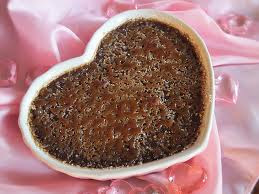How do I love thee? Let me count the ways...that's King Arthur Flour, of course! And with St. Patrick's Day around the corner, I was drawn to this easy peasy version of an Irish soda bread from the Cabot Creamery (which I also love) and KAF. Being half Irish gives me a connection which many feel is very important, saying that we should eat what our ancestors ate, if we want to be really healthy. My daughter Lisa, picking up on that idea, gave me the lovely "Irish Traditional Cooking" by Darina Allen. It is a beautiful cookbook with not only pictures of the recipes, but pictures of Ireland as well. I love it and should use it more often. Now I'm thinking that I would enjoy having the cookbook based on Darina's cooking school, but that's for another time. I'll find some recipes closer to St. Patrick's Day and put them on. Nothing too hard, of course. For now, I've taken this recipe off the KAF site and will share it today. This bread has a more biscuit-like texture than the soda bread I've made in the past, but it would be a wonderful addition to soups and stews. KAf says that it's so simple that you can have it ready to eat in less than an hour. Pictures are from the KAF web site.
Tip: I like to give any tips at the beginning, so that you can make adjustments before you get to the end and are forced to scramble. The bread that's shown is baked in a square dish--can be round--but it is too loose to stand alone. If you want a freeform loaf that is round you'll need to make a stiffer dough. Make a stiffer dough by reducing the butttermilk to 1 cup (or use 3/4 cup plain yogurt and 1/4 cup milk). Shape the dough into a round, place it on a lightly greased or parchment-lined baking sheet, and bake for 35 to 40 minutes, until golden brown.
2 1/2 cups King Arthur Unbleached All-Purpose Flour
2 teaspoons baking powder
1 teaspoon baking soda
1/2 teaspoon salt
4 tablespoons cold unsalted butter, cut into pats
8 ounces Cabot sharp or extra-sharp cheddar, grated; about 2 cups, lightly packed
1 1/4 cups buttermilk or 3/4 cup plain yogurt + 1/2 cup milk
1 large egg
Directions
- Preheat the oven to 375 degrees F. Lightly grease an 8" square or 9" round pan.
- In a large bowl, whisk together the flour, baking powder, baking soda, and salt.
- Add the butter, working it into the flour until the mixture is crumbly. Toss in the grated cheese.
- Mix the buttermilk and egg, and add to the dry ingredients, stirring just until everything is moistened.
- Scoop the sticky dough into the pan, using your wet fingers to spread it to the edges of the pan.
- Bake the bread for 40 to 45 minutes, until a cake tester inserted into the center comes out clean. It's internal temperature at the center will be close to 200 degrees F.
- Remove the bread from the oven, and loosen the edges with a table knife. Wait 5 minutes, then gently turn it out onto a rack to cool. It's tempting, but wait about 20 minutes before cutting the bread, if you can; it's a bit crumbly when hot.
You can see all about the making of this bread on the KAF web site. No yeast, so no time for rising is necessary. But being a quick bread, it doesn't have the staying power of a yeasted bread, which is fine for most of us. I'm thinking of making some for my own supper, and it's just me!
Blessings...Mimi
P.S. I just made this soda bread and wanted to share a picture with you. So easy! And I've tasted it now. The texture is very much like biscuit dough, but was very good with my soup at lunch.





































